Making cheese has been an art for nearly ten thousand years beginning in Europe, then spreading around the world. There’s hundreds of different kinds of cheese with a range of flavors, textures, and appearances. Since it’s been around for so long, one may think it’s a difficult task to make in a home kitchen. Fortunately, soft cheeses are remarkably easy to make with only three ingredients:
- whole milk
- vinegar
- salt
So how do these three simple ingredients come together to make such a great tasting cheese? The secret is in the vinegar. Traditionally, many cheeses require the enzyme called rennet to break down the milk proteins and separate the curds from the whey. Vinegar will also curdle milk, but the result will be softer curds because vinegar isn’t quite as strong as rennet. Rennet will produce curds that are sturdy enough to make harder cheeses such as cheddar. If you want to expand your cheese making, rennet can be purchased online.
The result? An incredibly creamy and delicious ricotta-style cheese!
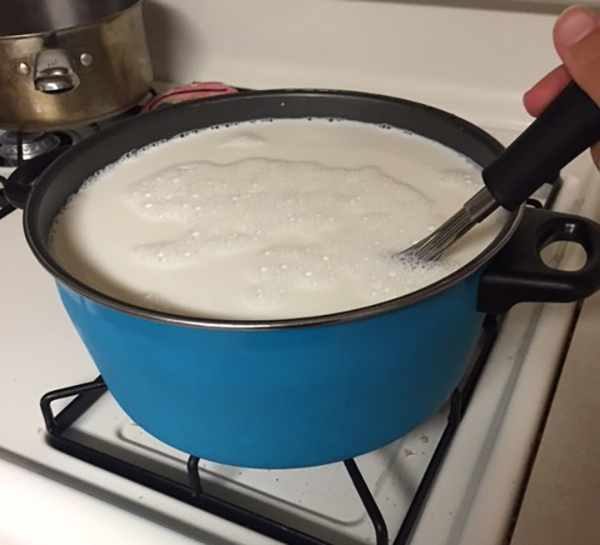
The steps to making this amazing-tasting cheese at home is very simple. Begin by bringing one gallon of whole milk to a simmer, about 195°F/90°C (try not to let it go to a full boil). Stir continuously so the bottom does not scorch.
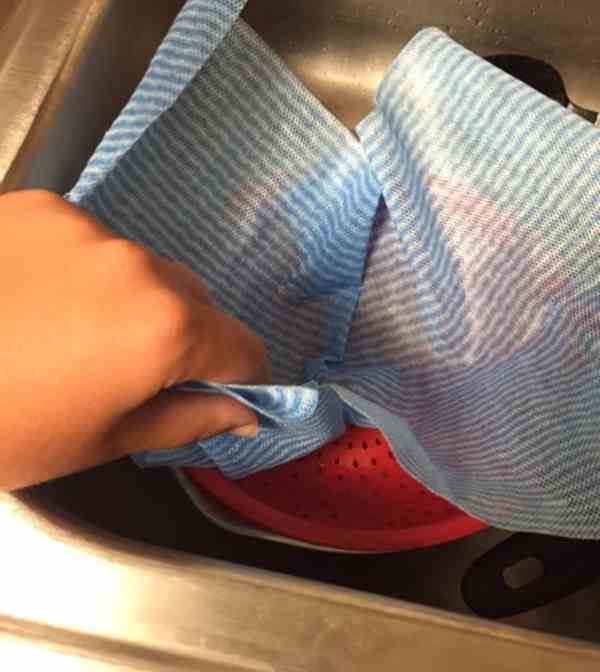
Meanwhile, place a strainer in a large bowl or in the sink and line it with cheese cloth.
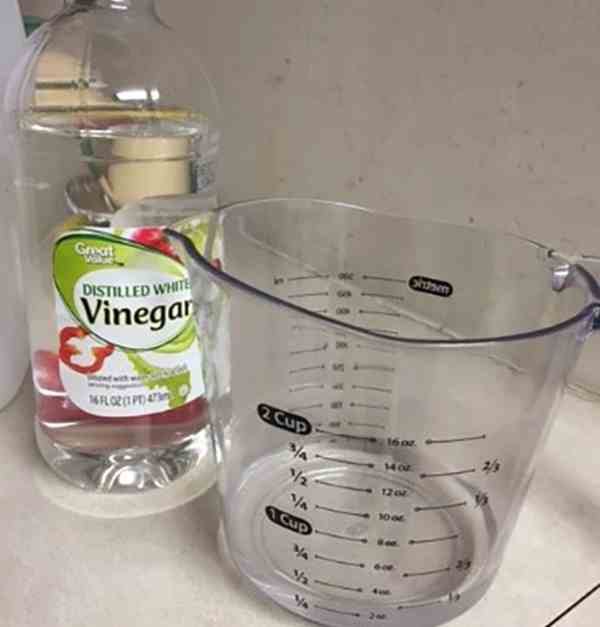
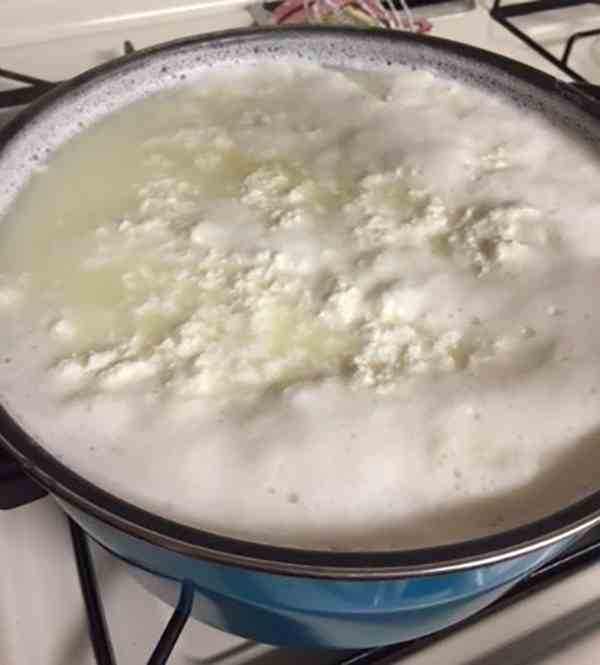
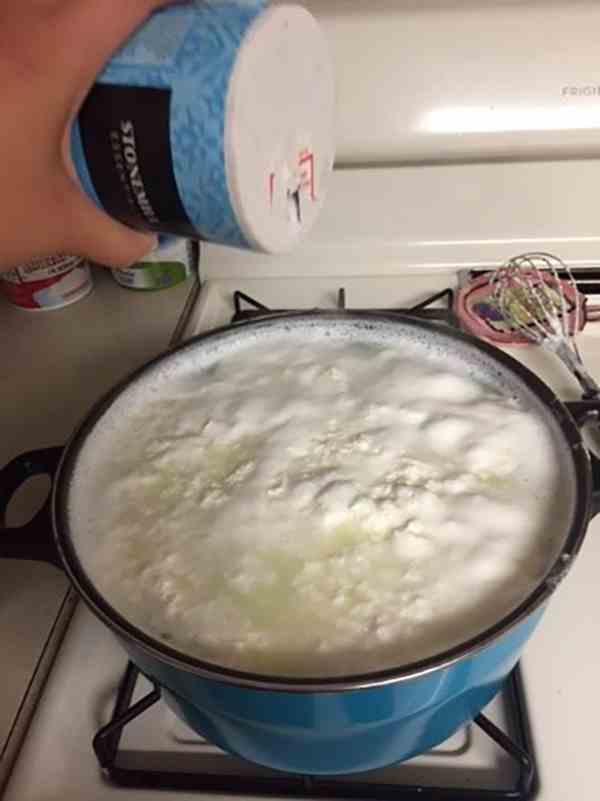
Once the milk reaches a low simmer, remove from heat and stir in ¼ cup of white vinegar. The mixture should begin to curdle and separate into curds and whey. Stir in about a half teaspoon of salt and let it stand for ten minutes.
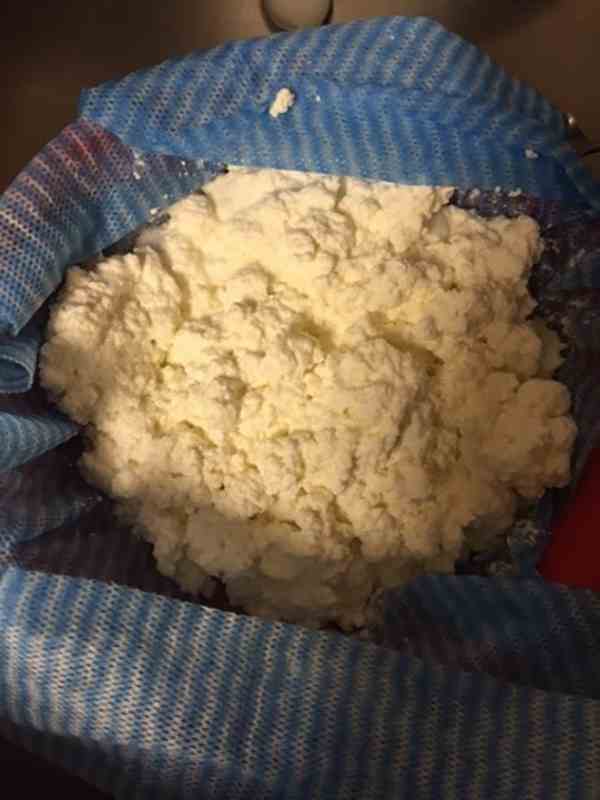
Next, strain out and discard the whey leaving only the white curds. Keep the cheese in the strainer with the cloth lining for about an hour to allow it to drain completely.
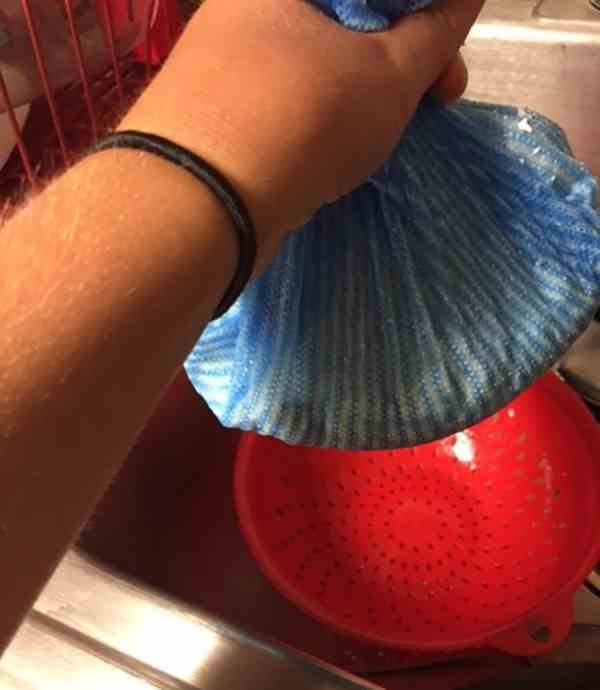
Once the whey has drained, collect in the cheese cloth and give it a light squeeze. This should remove any excess moisture while also forming it into a loose ball. Store in plastic and enjoy, no aging is required! Fresh cheese can be kept in the refrigerator for about a week.
There are many variations to this recipe, and many recipes to use it in. If there’s no white vinegar on hand feel free to substitute with homemade apple cider vinegar or the juice of one lemon. Fresh cracked black pepper and additional salt may be added, or even fresh herbs, minced garlic or homemade pickled garlic. Spread on toast or bagels, or even enjoy as a dip on crackers for a simple appetizer. Fresh cheese would also work well in place of ricotta cheese; make amazing lasagnas, baked ziti, stuffed shells, or even desserts like cannolis.
Mozzarella is another soft cheese that has a few extra steps and the addition of rennet, but is also easy to make from home. If you want to keep it simple, other cheeses that can be made using the vinegar method include cottage cheese and mascarpone. For mascarpone, heavy cream is used in place of milk. For cottage cheese: skim milk is used instead of whole milk, more vinegar is added, and the curds are mixed with half and half before serving.
There’s nothing more satisfying then knowing exactly what is in the food you’re eating. Cheese seems like that untouchable ingredient that has to be bought in the grocery store, when really it is as easy as adding vinegar to heated milk. The soft, creamy fresh cheese has so many uses that it’s well worth taking a little bit of extra time to make!
You may also like:
An Insanely Effective Way to Build a 5-year Food Stockpile (Video)
How to Keeps Eggs Fresh for Months with Mineral Oil
Survival Food – 59 Long-Term Survival Foods and Supplies at the Grocery Store

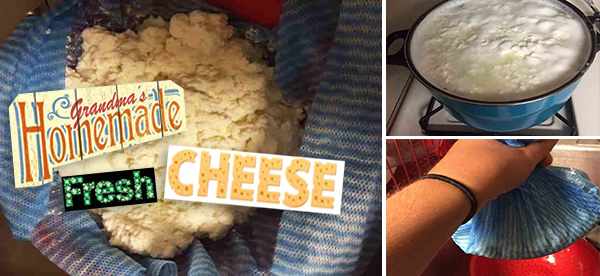














What would happen to the cheese from the above recipe if it was pressed (grape press), would the outside of the cheese harden enough to store in a root-cellar or spring house?
I have pressed this exact recipe, and it creates a semi-hard cheese. Harder than cheddar, but not quite as hard as swiss. I prefer it pressed actually. I used goat milk.
I made cheese this way as a girl. Needed a refresher so I hit the search bar. Very informational!!!!
When you write ‘whole milk’, do you mean the pasteurized whole milk from the local store …. or do you mean’ farm fresh, natural, unpasteurized from a local farmer’?
We used up the milk a day or two old, to make cheese. Not fresh. We also stole some cream for butter before making cheese. Goat cheese doesn’t separate as cleanly, but you can make it work. We used what we had on hand.
It sounds like you are using milk from a farm when you say ‘We also stole some cream for butter…’ Is this correct? I don’t see any way to get cream from pasteurized store milk, even if you used what they consider as whole milk. It is not what I remember getting delivered when I was a kid, that milk would often have the cream push the cardboard top off the glass bottles! Like traderfran asked, would store bought milk work for this? Thank you.
I assume “store bought milk” would also work. The “farm” milk we used was from our dairy goats, on our farm. We can’t afford to buy, store bought, cow milk, often. I miss our beautiful, gentle does.
Thank you! I have no access to any type of farm milk.
We’ve been making this type cheese for years. It presses nicely, and can be carefully sliced, grilled in a light oil with spices, and served atop pasta. When we were really broke and the boys we’re younger, we’d have this for supper at least once a week. It was one of my husbands favorites. I used apple cider vinegar n goat milk, though.
Gregory, you might try cheese wax, after you press most of the moisture out. We used a home made press, mostly pvc pipe, heavy can of vegs-inside the pipe (wrapped in wax paper) for the weight, and a shallow bowl. Line the pipe or press with cheesecloth before putting in the curds. O.k.?
Looking forward to trying this
MY GRANDMA USED TO MAKE WHAT SHE CALLED CREAM CHEESE FROM CLABBERED MILK, NOT STORE BOUGHT.SHE HUNG IT IN CHEESE CLOTH OVER NIGHT OVER A BOWL. SHE ATE IT WITH A LITTLE SUGAR AND CAN MILK. I HAD A VERY SMALL BITE BUT DIDN’T LIKE IT AT ALL.
Tried making this for the first time with store bought milk. Dang! I am pretty darn proud of myself. It turned out great!
I did cut the recipe in half, just because I hate wasting money that we don’t have if something goes wrong or taste horrible. Well worth the time. Can’t wait for the rest of the family to taste it.
I have used store bought whole milk for this cheese and it turned out well.
I’ll give this a try, thanks for posting.
you say skim milk for cottage cheese, could you use the milk left over from making butter from store bought heavy cream. I don’t think it is the same, but it certainly does not taste like store bought butter milk
This piece will stick with me for days. Some writing just leaves a mark, and yours definitely has.